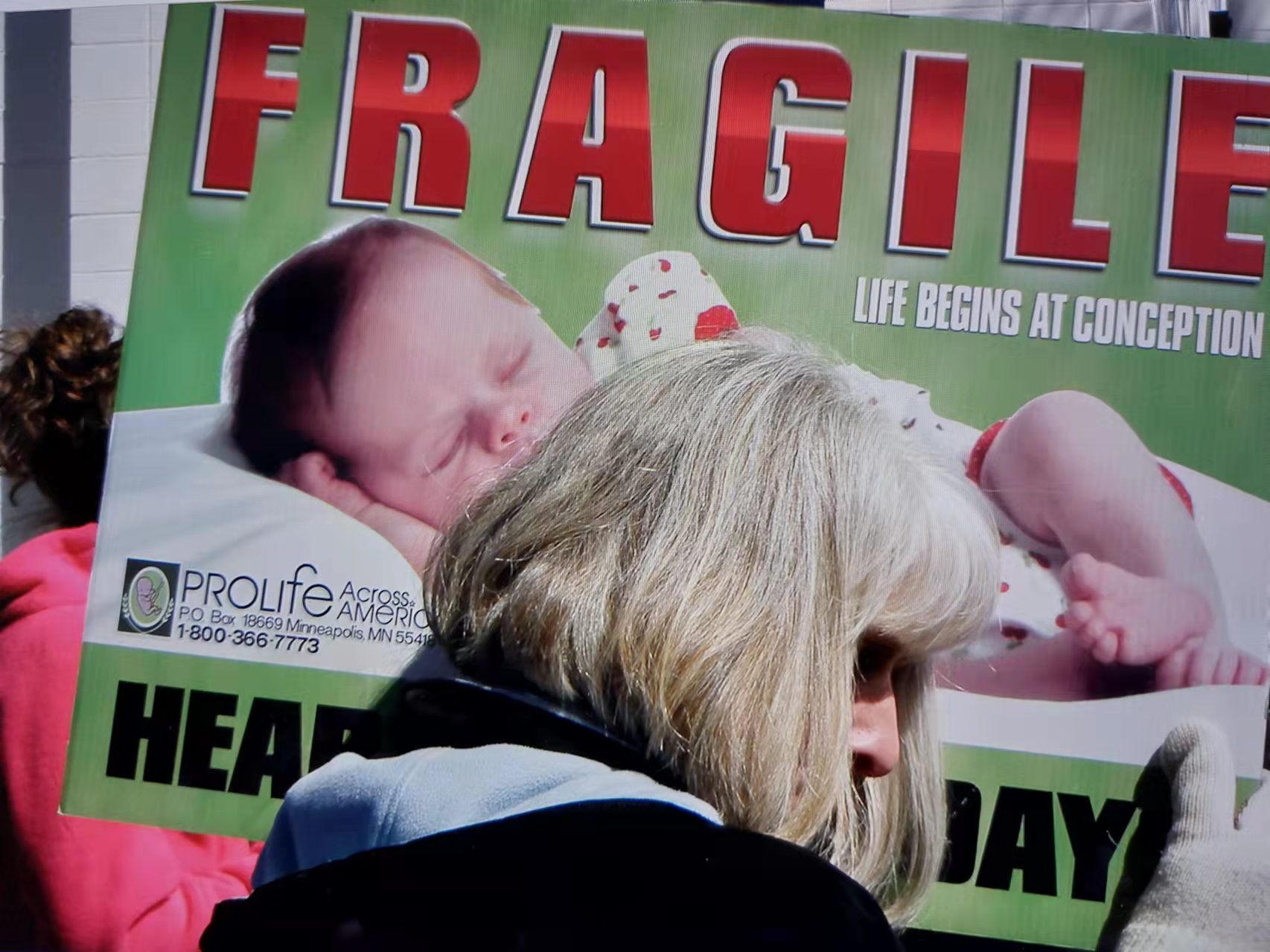By: Peter Andersen
A new Pew Research Center survey (conducted March 7-13, 2022) reported that a majority of Americans (72%) say abortion should be legal in all or most cases. By contrast, the Supreme Court is poised to strike down the 1973 Roe v. Wade decision that defined abortion as a privacy right and established a federal constitutional right to abortion.
According to May 2 publication of a leaked draft authored by Alito, the Supreme Court’s majority voted not just for state and local laws banning abortion, but for laws prohibiting women from traveling to obtain abortions, and laws that would jail doctors, nurses, friends and family members who “aid or abet” an abortion. This leaked decision soon brought a public outcry: the supporters of abortion protested outside of the Supreme Court and shouted that the unelected elite “raped” their rights–complaining that the unelected elite (the Supreme Court judges) had usurped the power of the people. Ironically, Alito’s rationale was to deny rights that are not mentioned in the Constitution. This is reaffirmation of the phony “originalist” arguments — that the interpretation of the constitution must be made according to its supposedly “original,” 18th century meaning.
The Pew survey reveals the huge divide in US politics; that the anti-abortion is mainly supported by the republicans, while almost democrats defend abortion rights. Although the Biden Administration publicly back abortion rights, at least 13 republican controlled states have already passed so-called “trigger laws,” designed to go into effect after the Supreme Court hands down its final decision. Moreover, the abolition of the federal constitutional right to abortion would remove the only legal obstacle to Congress passing a federal law banning abortion in all 50 states. Clearly, these laws are against the American people’s will. Unfortunately, the Supreme Court may go further to overturn all modern civil rights.
In-deed, over the last half century, abortion has frequently taken center stage in American politics. Some have pointed out that this is the result of institutional failure the US has an independently powerful Supreme Court, weak political party elites, and a decentralized political system. However, cannot completely explain today’s quandary. In fact, the issues have been purposefully manipulated over decades.
The roots of the anti-abortion ideology
The origin of the American anti-abortion movement wasn’t built in good faith. Instead, it relied on right-wing organizing around fears of white extinction, which continues to fuel the anti-choice rage we see today.
The roots of this racist basis for opposing abortion began to appear near the turn of the 20th century, when anti-abortion voices like Horatio Storer claimed that the procedure would allow white families to lose demographic ground to other races. He argued that whites needed to expand to every corner of America, including territories in the West and South that were being settled by Blacks, Mexicans, Native Americans and Catholics, according to research by religious historian Leslie Reagan. This fears still exists today: “If we continue to abort our babies and import a replacement for them in the form of young violent men, we are supplanting our culture, our civilization,” King stated in 2018.
However, anti-abortion was not a partisan issue at first. A 1970 poll found that some 70 percent of Southern Baptist pastors “supported abortion to protect the mental or physical health of the mother.” On the other hand, Democrat governor of Alabama, backed abortion legalization as a way to stop Black women from “breeding children as a cash crop” and using up social welfare programs. But that started to change in a hurry in 1970s when the “religious right” realized it had lost the Civil Rights battle and was going to have to desegregate Christian schools. As historian Randall Balmer has observed, evangelical concerns over this loss led to an allyship with the Catholic Right, inspiring a financial and social push to elevate anti-abortion and anti-LGBTQ beliefs into mainstream political discourse. ‘What changed their minds was Jimmy Carter’s intervention against the Christian schools, trying to deny them tax-exempt status on the basis of so-called de facto segregation,” he said in an interview.
Anti-abortion as a political strategy

To protect their bread, the losers of the de facto segregation gradually embraced and invested in the Republic party,the opponent of the democrats, who took away their cheese. Since then, the republican party, and conservative and corporate donors invested heavily in state-level elections so that they could gerrymander and give themselves a competitive advantage for a decade. It worked. By 2010, they flipped legislative chambers across the country, and states started ramping up their envelope-pushing anti-abortion bills, as well as voting restriction designed to make it more difficult for voters to throw them out of offices. The republicans now control 30 legislatures during the coming redistricting year, the Democratic control of Congress.
Pivotal in threatening abortion rights, during the Trump administration, Republicans installed an unprecedented number of federal judges, many were chosen by their ideolog rather than by bench experience. The radical takeover of the courts was not a random fluke but the result of careful plotting and hundreds of millions of dollars investment in right-wing ideologues and billionaires. As a result of the long-term strategi described above, it is not surprising why the leaked draft gained majority of the Supreme Court.
The same force is the backbone of the modern anti-abortion movement. As a political strategy, the Republicans have used anti-abortion decisions to unite all interested groups to fight against the democrats. Rather than as organic outrage around the moral question of “protecting life” anti-abortion in the United States is now a political question.
Manipulating the Supreme Court in a secret way
How could the unprecedented leak of draft happene? Who leaked the draft?
Some speculate the leaker was a law clerk, one of the 36 young lawyers chosen by the 9 justices to work alongside them in complete confidentiality. Perhaps the leaker clerk is more liberal than the justices, and wanted to warn Democrats about the impending opinion. Or maybe a conservative justice’s clerk was worried someone might defect, leading to a less sweeping outcome. Whichever speculation is more likely, it was not an accident, but a fruit of long-term manipulation.
A few years ago, the New York Times reported that the Heritage Foundation, a conservative think tank, ran a secretive “training academy” for young lawyers before they clerked for federal judges. In return for training by the academy’s elite faculty of sitting federal appellate judges and law professors, the future law clerks had to vow to keep what they had learned a secret and use their training to further the Heritage Foundation’s ideological goals.
It worked. Researchers have uncovered evidence of clerks’ “fingerprints” throughout the justices’ decision-making process, including on choice of cases, votes on the merits, and opinion content. The clerks’ influence is not as large a factors as the justices’ own policy views. But however modest, some consider this influence inappropriate because clerks are not subject to Senate confirmation and have no formal authority under the Constitution.
The anti-abortion debate has been an umbrella for all forces who are antiDemocratic Party. Although most American voters prefer constitutional abortion rights, U.S. parties are polarized and U.S. institutions will keep the pot boiling.

